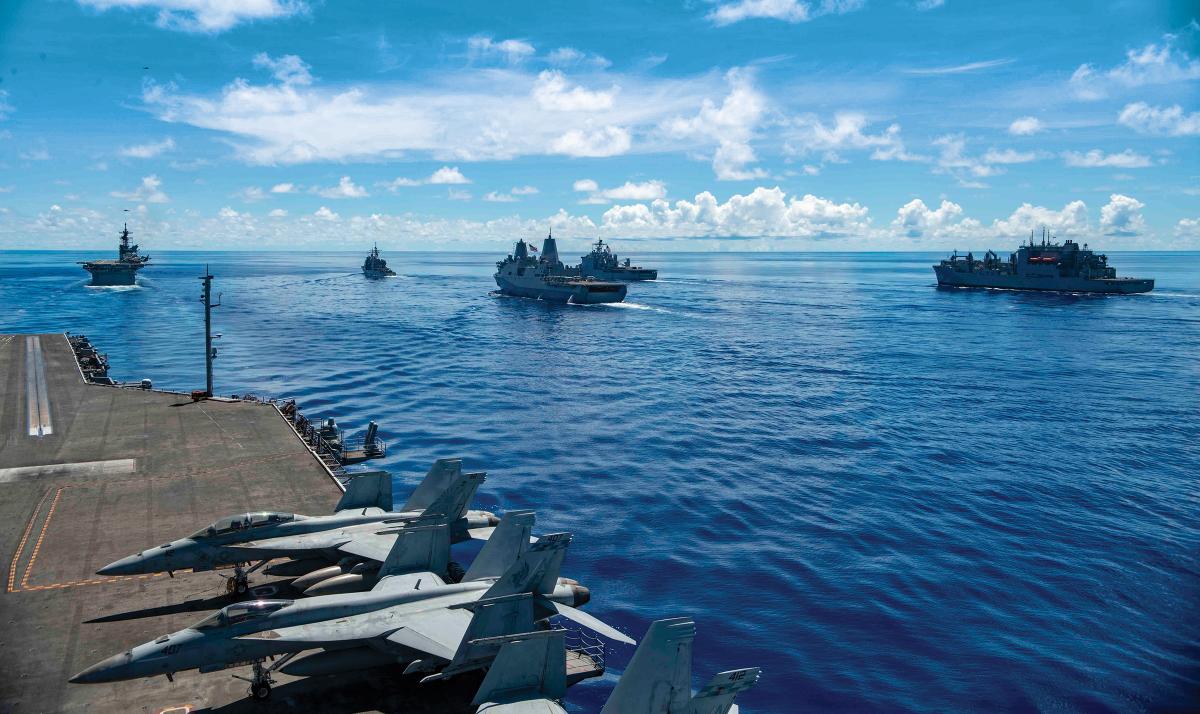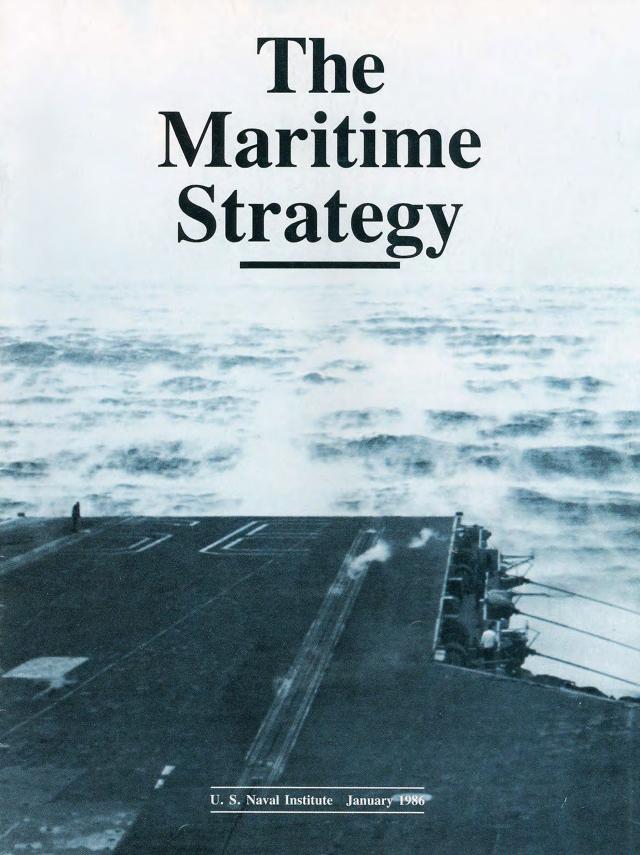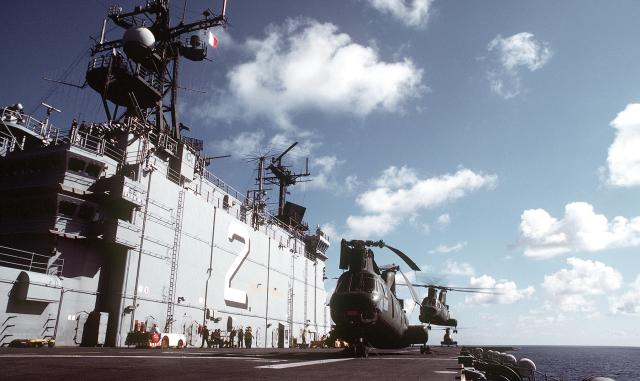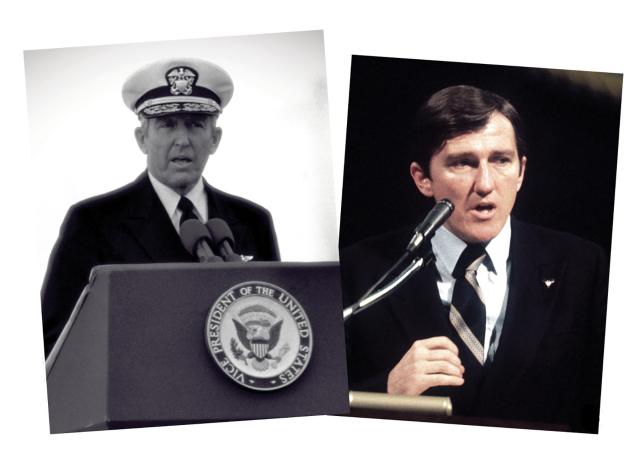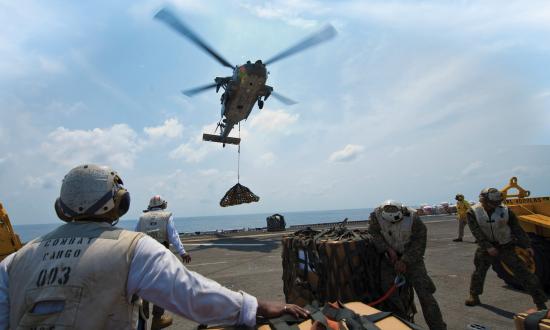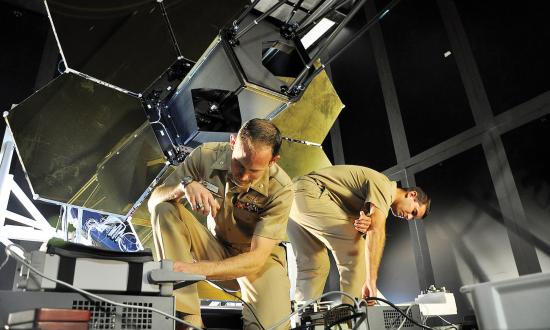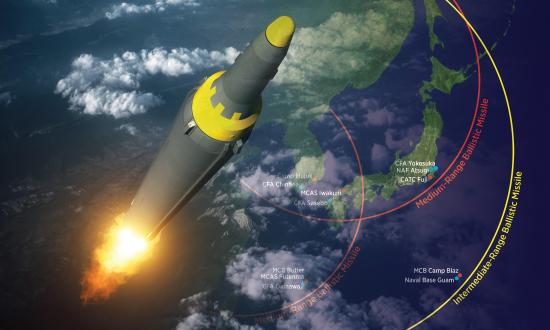In the span of a generation, the U.S. Navy forgot how to develop warrior-admirals. In 1976, after Admiral Thomas Hayward completed his tour as Commander of the Seventh Fleet, he realized “it was not until the three-star level that a senior officer was faced with having to make strategic decisions.”1 Two years later, as Chief of Naval Operations (CNO), Admiral Hayward remarked that much of the debate on naval issues focused on the budget, which conflated debates over quantities and capabilities with maritime strategy.2 Yet, 30 years prior, Fleet Admiral Chester Nimitz reflected on his preparation for World War II: “The enemy of our games was always Japan—and the courses were so thorough after the start of WWII—nothing that happened in the Pacific was strange or unexpected.”3
In many ways, the challenge of the latter half of the Cold War—when the United States enjoyed maritime superiority for a generation before facing a great maritime competitor—mirrors events of today. By the time it was apparent that a new strategy was necessary, senior leaders of the Navy concluded that the service lacked both the ability to develop the maritime strategies to compete with the Soviet Union and the leaders to execute them. Secretary of the Navy John Lehman told the first cohort of the Strategic Studies Group (SSG), “We need to raise a generation of warrior admirals, not program managers. We need to focus on the battle of, say, the Norwegian Sea, rather than the battle of the budget.”4 This sentiment was echoed recently by Admiral Scott Swift, then Commander of the U.S. Pacific Fleet: “But after what will be five years in command of two fleets, I find myself making similar observations as Admiral [Robert] Willard: There is no classroom instruction and little doctrine or guidance for fighting a fleet.”5
In the early 1980s, Secretary Lehman and CNO Admiral James Watkins unveiled The Maritime Strategy, which helped lead to the end of the Cold War. Developing the strategy required the Navy to reconsider the connections between independent strategy development, wargaming, fleet exercises, and how the budget supported all of it. It offered the Navy its first coherent, offensive maritime mission since the Rainbow Plans of the interwar period.
The Maritime Strategy owed its success to the “ecosystem” that Secretary Lehman and CNOs Hayward and Watkins created. Knowing that no single organization could do the work alone, the senior leaders worked to build the necessary, independent nodes in the strategy network, each with its own part to play. They served as champions and moderators of the strategic debates and channeled the various organizations into areas where their strengths could mutually reinforce the rest of the network.
Today’s Navy resembles the Navy Admiral Hayward inherited in 1978, except now the United States has two peer competitors in a more complex international environment. The budget again has emerged as the primary driver of the Navy’s strategic course. At the dawn of this new era, the Navy must recultivate an ecosystem in which organizations and people interact to create emergent effects at all levels and domains of warfare.
Species in the Strategic Ecosystem
Who in the Navy is responsible for strategy? It’s complicated. Technically, the CNO should not be developing strategy—his Title 10 responsibilities are to man, train, equip, and provide forces to the combatant commanders, not exercise operational control of those forces in combat. Combatant commanders, whose authority to execute national policy around the world flows from the White House through the Secretary of Defense, theoretically are responsible for developing strategies to fulfill the nation’s goals and requesting forces from the service chiefs to execute them. But the world is never that clean.
Both sides overstep their bounds and abdicate their responsibilities. Organizations funded by and under the direction of the CNO are vital players in strategic development: the Naval War College and its advanced research programs, the SSG (when it existed), the Navy Warfare Development Command, the Naval Postgraduate School, and the smattering of graduates of politico-military education programs. But the combatant commanders lack the resources to effectively conduct strategy development and experimentation simultaneously while carrying out their daily missions—a situation that impinges on their ability to successfully influence the Office of the Chief of Naval Operations (OPNAV) budget process to get the forces they need.
As one officer noted in a 1970 internal memo: “Practically the entire OPNAV organization is tuned, like a tuning fork, to the vibrations of the budgetary process. . . . There is a vast preoccupation with budgetary matters at the expense of considering planning, or readiness or requirements, or operational characteristics or any of the other elements contributing to the ability of the Fleets to fight.”6 The environment has changed little.
Emergent Effects and Keystone Species
In the past few decades, the Navy has placed increasing faith in the role of operations research and systems analysis to determine the efficacy of programs within the context of budget. Belief in the numbers, without careful scrutiny of the assumptions on which the analyses are built, has developed a generation of leaders who believe the Navy is merely a complex system that can be quantitatively modeled, not a complex adaptive system. The distinction may seem trivial, but the definitions reveal a stark difference between the behaviors of both types of systems. The Santa Fe Institute, a world leader in complexity science, defines these two types of systems:
Complex system: A system composed of a large number of interacting components, without central control, whose emergent “global’’ behavior—described in terms of dynamics, information processing, and/or adaptation—is more complex than can be explained or predicted from understanding the sum of the behavior of the individual components.
Complex adaptive system: A complex, nonlinear, interactive system which has the ability to adapt to a changing environment. Such systems are characterized by the potential for the emergence of new structure with new properties. Complex adaptive systems can evolve by random mutation, self-organization, the transformation of their internal models of the environment, and natural selection. Examples include living organisms, the nervous system, the immune system, the economy, corporations, and societies.7
The key differences lie in the adaptability and nonlinearity of complex adaptive systems brought about by people. Under a complex system, the effects may be difficult to predict at the global level, but the system will not spontaneously reorganize itself as it might in a complex adaptive system. The move to a data-driven Navy focuses leaders on the complexity of the system, but not its adaptability, where sailors and officers use critical thinking to create new behaviors within the system. The Navy is not simply a complex, dynamic system; it is an ecosystem.
Today, the underdevelopment of sailors and officers in naval tactics and operational strategy effectively prevents the emergence of new effects and organizations. Not enough people have the knowledge and abilities to make a difference and are hamstrung by the shift from the 30-plus-year career path prior to World War II—which allowed for repeated in-residence study at war colleges and graduate schools—to the operationally intensive 20-year career geared toward service in tactical, O-5 command.8
In ecosystem theory, a keystone species must exist to regulate the ecosystem effectively. These can be apex predators that control populations or species that govern the stability of a system.9 Without a keystone species, systems collapse or become inherently unstable. Within the realm of maritime strategy, the Navy previously had a few keystone species that kept the ecosystems healthy. During the interwar period from 1918 to 1941, the General Board provided the strategic forcing function that kept the overall development and growth of the Navy stable. It helped the CNO incorporate the results and lessons learned from the Fleet Problems into new doctrine and set the objectives and experiments for the next annual problem. As a result, the board influenced changes to ship designs and organizations that would eventually produce victory in World War II.
In the 1980s, Secretary Lehman and CNO Admiral Hayward cultivated and governed the strategic ecosystem: They founded the SSG to inject new and innovative ideas; emphasized the cycle of research with wargaming, the Naval War College, and fleet exercises; and mandated widespread flag participation to ensure the development of sound strategy and that flag officers in turn understood how to train and mentor the junior officers in their commands at sea to do the same at the tactical level. By the mid-1980s, the ecosystem had reached equilibrium in the development of warriors and cultivation of strategic thought through the cycle of research.
Characteristics of a Healthy Ecosystem
Starting in the mid-1970s, the Navy underwent a strategic renaissance and began recovering from strategic near extinction. It rediscovered how to complete the cycle of research and translate ideas into experiments and then into operational plans tested against the Soviet Union. CNO Hayward refocused the Naval War College on its historical roots of tactics and strategy, standing up the Center for Naval Warfare Studies and, within it, the SSG under former Under Secretary of the Navy Robert Murray. Murray framed the challenge bluntly:
In July 1981, nobody knew what the Center for Naval Warfare Studies was to be, including me. . . . We saw we did not have enough naval officers who were thinking broadly enough about war-fighting issues. And we certainly had nothing that we could call naval strategy. There were lots of ideas, but there was nothing that we could call all-encompassing as to how the Navy would operate in war. We didn’t even have a system for producing such a concept.10
To tackle the latter problem, Murray established the SSG with the intent of taking a small cadre of carefully selected officers, giving them unprecedented access to Navy and Marine Corps flag officers and senior civilians, and letting them focus exclusively on small elements of a maritime strategy. Many initially criticized this approach—criticisms that continued until the dissolution of the SSG in 2016—as a waste of time of highly capable officers. Murray, however, rebutted those criticisms with his true intent behind the cohort system: “I wasn’t interested in building career strategists; I wanted to give naval officers a chance to think through war-fighting issues and then go back to the fleet and spread the word.”11
Over the next two years, these small cadres of officers developed the nucleus of what would become The Maritime Strategy. Admiral Hayward, and the many other flag officers with whom the SSG discussed elements of the strategy, bought into the idea of developing “strategy in a vacuum” and the highly unorthodox operations that they were proposing. Admiral Hayward further vetted the strategic concepts into a unified strategy through a series of seminars in Annapolis, with hundreds of flag officers attending. Everyone was brought in.
By August 1981, the first elements of the new strategy were being tested in the waters of the North Atlantic in exercise Ocean Venture ᾿81 under Second Fleet Commander Vice Admiral James “Ace” Lyons. Secretary Lehman viewed the multinational exercise as “a transformational strategic operation, not just a training event.”12 The results of the operation, including Soviet responses, were thoroughly analyzed by the Naval War College and fed the next cycle of the SSG, which included rigorous wargaming with the support of the Naval War College’s gaming department. Secretary Lehman directly credits the strategic development and testing against an actual adversary as one of the crucial factors for the success of The Maritime Strategy, and he saw it as a “virtuous cycle” that integrated technology, lessons learned, and intelligence throughout the rest of the Reagan administration.13
The development and execution of The Maritime Strategy in the 1980s shows the elements of a healthy ecosystem for strategy:
- A keystone species governing the system
- Healthy reproduction of strategic thinkers and leaders
- An influx of new fodder from the SSG to keep the ecosystem adapting and evolving
- A focus on building resilience and adaptability in ideas through both wargaming and at-sea fleet exercises, preferably against the adversary
A healthy ecosystem requires several independent nodes within the system to be truly healthy. No one species can be dominant and expect the ecosystem to thrive. Admiral Hayward’s refocusing of the Naval War College back to strategy and tactics reestablished an independent node in the ecosystem, as did Secretary Lehman’s establishment of the SSG. Several independent nodes built resilience in the system and allowed for greater growth of the people in the complex adaptive system.
Restoring the Navy’s Ecosystem
As has happened in the Navy’s history, events may transpire that cause changes in the ecosystem too rapidly for it to adapt and evolve. These existential events—such as the sudden end of the Cold War and harvesting of the “peace dividends,” coupled with a sudden lack of purpose—produced a shock so extreme that the Navy’s strategic ecosystem cannot survive. But ecosystems never truly die, they reemerge, slowly at first, as a new system with new properties.
New ecosystems never replicate the previous one. The next ecosystem of strategy will emerge in a fundamentally different international environment than the Navy faced in the 1980s. Today’s sailors and officers “grew up” with vastly different experiences than their counterparts a generation before. Those factors will produce a different organization and behavioral norms. The Navy should not try to re-create the magic of the 1980s but rather understand its lessons and adapt them to the current world.
Navy leaders continually state that people are the most important resource in the era of great power competition. People transform a complex system into a complex, adaptive system. To that end, the Department of the Navy should take the following actions to start righting the ship:
- Designate a keystone species by reestablishing an independent General Board, under the Secretary of the Navy, staffed with flag officers and upwardly mobile captains and colonels, with the ability to influence all aspects of the strategy ecosystem, from development to platform capabilities to the budget, etc.
- Reestablish the Strategic Studies Group, rechartered under its first mission from the 1980s, not the rebranded SSG from 1995–2016. Unlike the General Board, the SSG must be dedicated solely to the development of radical and innovative warfighting concepts—not all aspects of the ecosystem.
- Implement the recommendations of the Education for Seapower report with respect to the inclusion of tactics and wargaming, the requirement for advanced strategic education for future flag officers, and a Naval War College refocused on strategy and tactics, not necessarily graduate degrees.14 Consider the expansion of the maritime strategist programs to ensure a healthy cadre of maritime strategists with viable career paths through major commands and beyond.
- Formalize the cycle of research by officially reestablishing the Fleet Problem series at the Navy level, not just the Pacific Fleet level, and give the General Board oversight authority.
These actions will not fix the Navy overnight, but they will go a long way toward cultivating the ecosystem of strategy that the Navy desperately needs to compete effectively against other great powers in the 21st century. Our survival depends on it.
1. John Hattendorf, The Evolution of the U.S. Navy’s Maritime Strategy, 1977–1986, Naval War College Newport Papers, no. 19 (Newport, Rhode Island: United States Naval War College Press, 2004), 8.
2. Hattendorf, The Evolution of the U.S. Navy’s Maritime Strategy, 8.
3. E. B. Potter, Nimitz (Annapolis, MD: Naval Institute Press, 2008), 136.
4. Hattendorf, The Evolution of the U.S. Navy’s Maritime Strategy, 51.
5. ADM Scott Swift, USN, “A Fleet Must Be Able to Fight,” U.S. Naval Institute Proceedings 144, no. 5 (May 2018), usni.org/magazines/proceedings/2018/may/fleet-must-be-able-fight.
6. CAPT Peter Swartz, USN (Ret.), “U.S. Navy Capstone Strategy, Policy Vision and Concept Documents: What to Consider Before You Write One,” CNA (March 2009), 36.
7. “Glossary,” Complexity Explorer, Santa Fe Institute, complexityexplorer.org/explore/glossary.
8. CDR Joel Holwitt, USN, “Recapturing the Interwar Navy’s Strategic Magic,” Naval History 31, no. 5 (December 2017), usni.org/magazines/naval-history-magazine/2017/october/recapturing-interwar-navys-strategic-magic.
9. Holwitt, “Recapturing the Interwar Navy’s Strategic Magic.”
10. Robert Murray, “A Warfighting Perspective: An Interview with Robert Murray,” U.S. Naval Institute Proceedings 109, no. 10 (October 1983), usni.org/magazines/proceedings/1983/october/war-fighting-perspective-interview-robert-murray.
11. Murray, “A Warfighting Perspective: An Interview with Robert Murray.”
12. David Winkler, “Maritime Strategist Admiral Ace Lyons Remembered,” Naval Historical Foundation, 17 December 2018, navyhistory.org/2018/12/maritime-strategist-admiral-ace-lyons-remembered/.
13. John Lehman, Oceans Ventured: Winning the Cold War at Sea (New York, NY: W. W. Norton & Co., 2018).
14. Thomas Modly et al., Education for Seapower, Department of the Navy (December 2018), 65–66.



